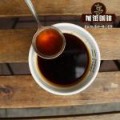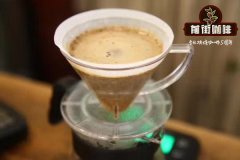Introduction to the flavor characteristics of COE award-winning sweet orange manor coffee sweet orange manor is also the most popular in Honduras

[Honduras Sweet Orange Manor]
Honduras El Naranjo
Country: Honduras
Producing area: Makala Marcala
Altitude: 1425 m
Variety: Kaduai
Flavor: dry aromas with aromas of spices, roasted peanuts and chocolate, wet aromas with hints of herbs, a palate of orange peel, nuts, cream and a bit like a cup of lemon tea.
Production area introduction
Honduras is located in central Central America, bordered by the Caribbean Sea to the north, the Pacific Ocean to the south, Guatemala to the west, El Salvador to the southwest and Nicaragua to the southeast. It covers an area of 112492 square kilometers and the coastline is about 1033 kilometers long. The whole territory, except the coastal plain, is mountainous, with the highest elevation of 3000 meters in the northwest and more than 2400 meters in the south. The main rivers in the territory are the Koko River, the Patuca River and the Wulu River. Rivers from inland mountains crisscross and flow into the two oceans. Many basins and river valleys are formed between the various mountain ranges. The larger basins are the Siria and Rapagu Alai basins, and the main river valleys are the Komayagua and Hamastland River valleys.
Sweet Orange Manor (El Naranjo) is located in Marcala, one of the most famous producing areas in Honduras. Honduras is born with suitable soil and water, and there are a number of high-quality coffee trees growing in Honduras. The manor is also named after the shade tree, so the shade tree of the sweet orange manor is a tall wild orange tree, the aroma of wild orange is very strong, there is a rare rich sweetness in growing coffee here, and orange fruit trees also inject rich flower and fruit aromas into the coffee. The varieties now grown on the estate are Kaddura, Bourbon and Rosa. In addition to fruit trees and coffee trees, the manor also has windbreak walls to protect coffee and fertilizer mainly composed of fresh coffee fruit shells.
In 2016, the Sweet Orange Manor won the 14th place in the Outstanding Cup Competition, and the female owner Carmen Fabiola Fiallos Melendez finally realized her dream of becoming a boutique coffee farmer. Makara belongs to the La Paz region and produces coffee on a par with Santa Barbara, another famous producing area in Honduras. The Caballero family also has a farm in Makala, and they won the 2016 championship on La Paz's farm. Unlike large estates, the Dominguez are both landowners and coffee farmers, and it was only after their marriage that Carmen began to make coffee. The two work well together, she is in charge of the harvest and drying process, her husband is in charge of peeling and peeling, and they hope to pass on not only a coffee farm, but also a passion for coffee to their two children. The family has been involved in the planting and promotion of coffee trees for generations. Roger is the third generation of manor users. He began to grow coffee from his ancestors and now owns four manors through the efforts of his family. Sweet Orange Manor is one of his family. The whole manor covers an area of 43 hectares, with an average elevation of 1650m.
The granules of coffee beans in Honduras are large in shape, uniform in size and glossy in color. In order to facilitate harvesting, farmers will trim the coffee trees to no more than 150 centimeters, because if they grow too high, they have to set up ladders to pick, which is not only time-consuming, but also may damage the trees by bending branches. As the ripening period of each fruit of coffee beans is different, in order to maintain the good quality of coffee beans, it is necessary to pick them manually, and then select the ripe fruits. For coffee fruits of the same branch, it often takes several weeks to pick them all.
Kaduai is a kind of bean that we often encounter, and many high-quality American beans are actually Kaduai. In 1949, the Agricultural Research Institute (Instituto Agronomico;IAC) of Campinas in Sao Paulo, Brazil, crossbred the "New World" bean seed with Huang Kadura to develop Kaduai, which was officially released in 1972 after several generations of selection.
Kaduai is very popular with farmers, with high yield, similar to Kaddura, short plants, suitable for intensive planting, and good resistance to natural disasters, especially wind and rain. It inherits the advantages of Kaddura's low tree stature and changes Mondonwood's shortcomings; another advantage is that the results are solid and are not easy to fall off when the strong wind blows, which makes up for the weakness of Arabica fruit. After its official release in the 1970s, it was extended to Central American countries, widely cultivated in Guatemala, Honduras, Panama, and Brazil of origin. Simply considering the flavor, under the appropriate local conditions and treatment, Kaduai can have a quite wonderful flavor.
Kaduai was introduced into Honduras in 1979 and officially launched in 1989. It is popular with farmers and accounts for more than half of all production in Honduras today. Because Kaduai's plants are short and can be planted densely, the flavor at an altitude of more than 1300 meters is also very good, the only disadvantage is that it is very vulnerable to diseases and insect pests. IHCAFE in Honduras is trying to develop a hybrid of Kaduai and Katim to improve disease resistance.
Important Notice :
前街咖啡 FrontStreet Coffee has moved to new addredd:
FrontStreet Coffee Address: 315,Donghua East Road,GuangZhou
Tel:020 38364473
- Prev

The flavor characteristics of Central American Honduran coffee beans
Honduras is a mountainous country located in northern Central America. It is bordered by the Caribbean Sea to the north, the Gulf of Fonseca in the Pacific Ocean to the south, Nicaragua and El Salvador to the southeast, and Guatemala to the west. More than three-quarters of the territory for mountains and plateaus, mountains extend from west to east, inland lava plateau, multi-mountain valley, coastal plains. Tropical climate, coastal plains are tropical rain forests
- Next

An introduction to the flavor characteristics of the nine boutique producing areas in Ethiopia
Nine boutique producing areas in Ethiopia: Yega Xuefei (boutique producing areas): 1800-2000 meters above sea level | Pastoral Coffee system | Yega Xuefei is affiliated to the Sidamo producing area, so it is separated separately because of its unique flavor. In addition to the small town of Yega Xuefei, it also includes three by-product areas around Wenago, Kochere, Gelena and Abaya. So the new Yega Xuefei
Related
- Does Rose Summer choose Blue, Green or Red? Detailed explanation of Rose Summer Coffee plots and Classification in Panamanian Jade Manor
- What is the difference between the origin, producing area, processing plant, cooperative and manor of coffee beans?
- How fine does the espresso powder fit? how to grind the espresso?
- Sca coffee roasting degree color card coffee roasting degree 8 roasting color values what do you mean?
- The practice of lattes: how to make lattes at home
- Introduction to Indonesian Fine Coffee beans-- Java Coffee producing area of Indonesian Arabica Coffee
- How much will the flavor of light and medium roasted rose summer be expressed? What baking level is rose summer suitable for?
- Introduction to the characteristics of washing, sun-drying or wet-planing coffee commonly used in Mantenin, Indonesia
- Price characteristics of Arabica Coffee Bean Starbucks introduction to Manning Coffee Bean Taste producing area Variety Manor
- What is the authentic Yega flavor? What are the flavor characteristics of the really excellent Yejasuffi coffee beans?

